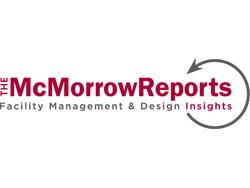Urban Land Institute Offers Real Estate Forecast for '21 and '22
Washington, DC, November 5, 2020-The Urban Land Institute held its semi-annual real estate forecast on October 28 via webinar, and McMorrow Reports provided a list of key findings from the seminar.
These included,
- Commercial real estate transaction volume reached $593 billion in 2019, a post-Great Financial Crisis peak. Volume is expected to be about 50% lower in 2020 with a forecast of $300 billion. Forecasts for 2021 and 2022 show growth again with transactions at $400 billion and $500 billion, respectively.
- Overall, commercial property prices are expected to drop by 2% in 2020, plateau in ‘21 and then resume growth in 2022 at a 4% growth rate.
- Institutional real estate assets are expected to provide total returns of -1.7% in 2020, but returns are forecast to turn positive in 2021 and 2022, at 3% and 5.6%, respectively. By property type, 2020 returns are forecast to range from industrial’s 4.5% to retail’s -9.9%. In 2022, returns are forecast to range from industrial’s 10% to retail’s 2%.
- Change in vacancy and availability rates differ widely by property type. In 2020, industrial availability is forecast to move up 50 basis points, while apartments are forecast to move up 100 basis points and both office and retail are forecast to move up 200 basis points. In 2021, industrial availability is expected to reverse direction and notch down slightly, apartment vacancy notches up slightly, and both office and retail vacancy rates continue to increase, albeit more moderately. In 2022, all sectors show slight improvement, with the exception of retail which remains unchanged over 2021.
- Commercial property rent growth differs widely by property type, as well. In 2020, industrial rent growth is forecast to be 1.0%, while apartments, office and retail are forecast at -2.5%, -2.4%, and -4.0%, respectively. In ‘21, both the industrial and multifamily sectors experience positive growth, at 2.1% and 0.1%, respectively, while office rental rate growth is -1.0% and retail is -2.8%. By ‘22, positive rental growth is forecast for all sectors ranging from 3.3% in the industrial sector to 1.9% in the office sector. The exception is the retail sector that plateaus in 2022.
Office Sector Fundamentals
- Office vacancy rates reached a post-recession low of 12.1% in 2019, below the 20-year average of 14%. Vacancy rates for 2020 are forecast to rise 200 basis points to 14.1% continue to rise another 100 basis points in 2021 to 15.1% before edging down 14.8% in 2022. Vacancy rates in all three forecast years are above the long-term average.
- Growth in office rental rates was strong in 2019, increasing 4.7%, well above the 20-year average of 1.5%. The forecast indicates a decline in office rents of -2.4% in 2020 and further decline of -1.0%. Growth will be positive in 2022 at 1.9%, above the long-term average.
Speakers included Richard Kleinman, managing director of research strategy, LaSalle Investment Management; Jeanette Rice, Americas head of multifamily research, CBRE; Tim Wang, managing director and head of investment research, Clarion Partners; and Adam Ruggiero, managing director, MetLife Investment Management.
